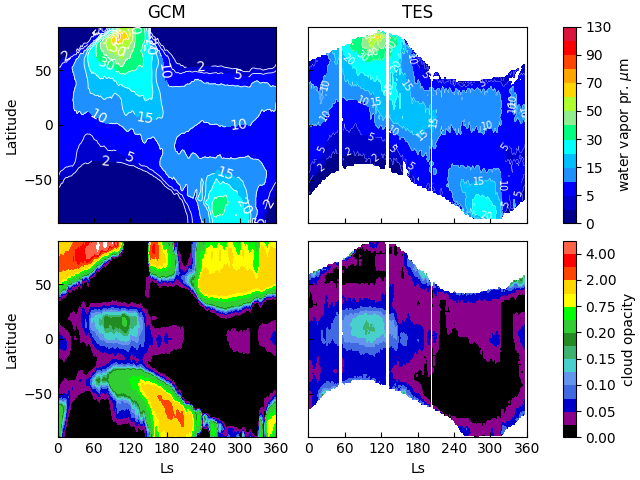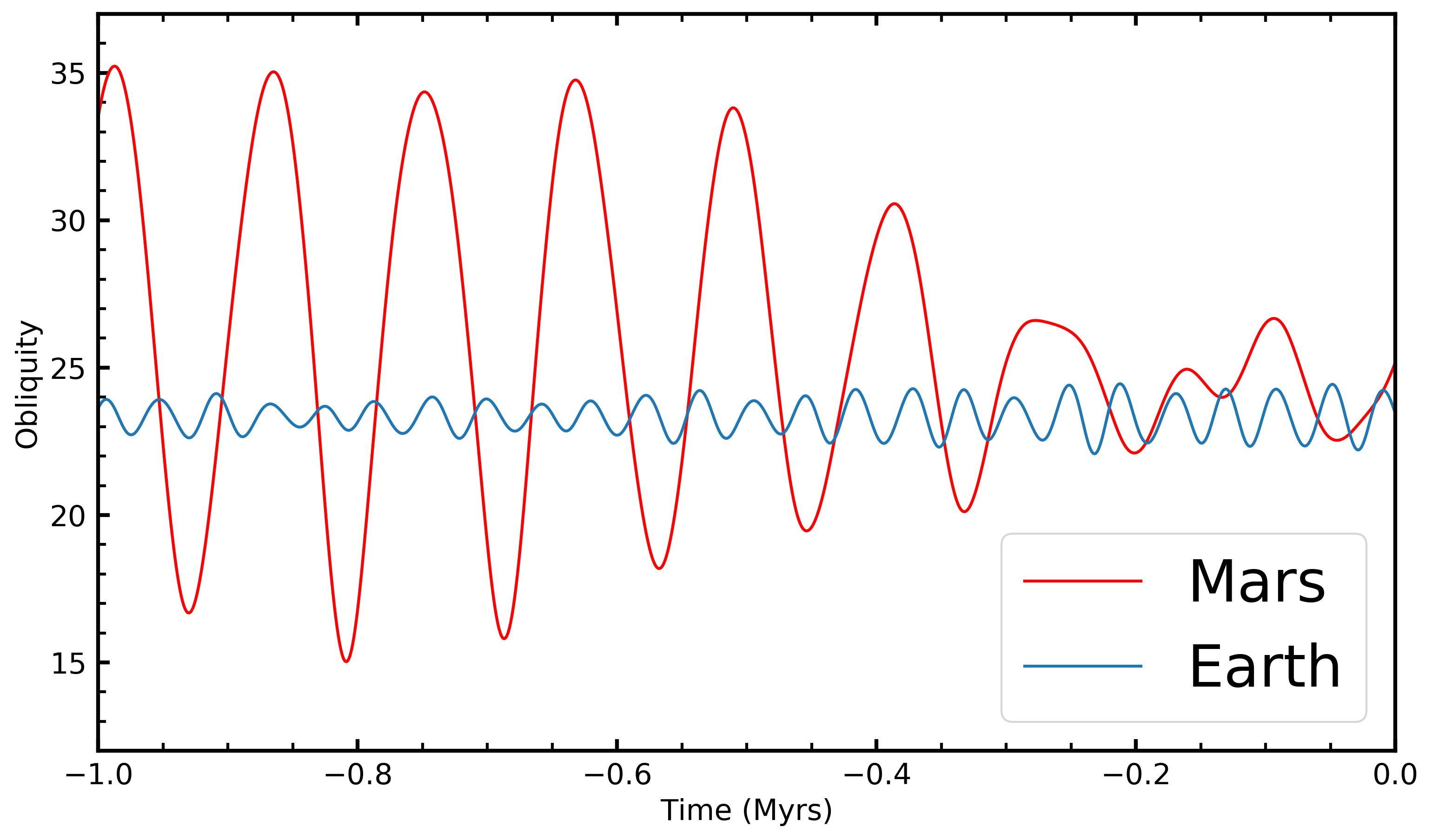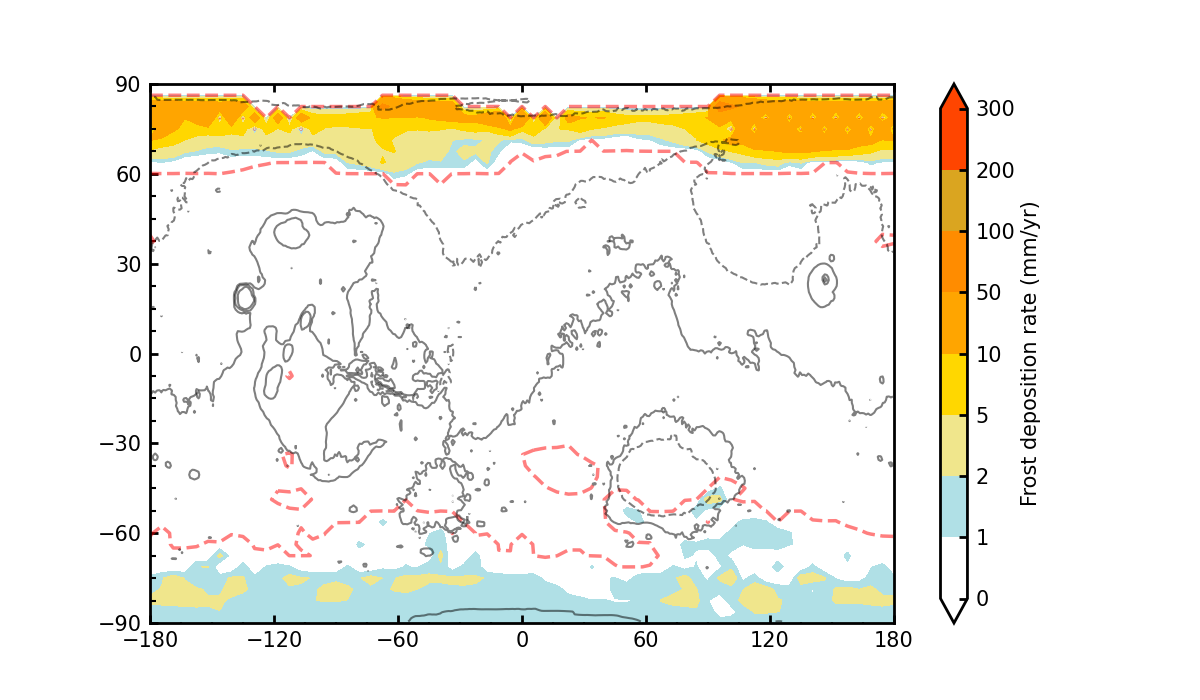My work is centered on the modeling of the climate of Mars using a Global Climate Model (GCM). Specifically, the water cycle on Mars and its variation in the recent past of the planet.
The water cycle on Mars is highly sensitive to the coupling with radiatively active water-ice clouds. A large fraction of my work includes the calibration and validation of the model to understand the observations, and improvement of our physical parameterization to best match observations.

We have numerous geological evidences of recent ice ages on Mars, meaning that the water cycle must have changed drastically. The origin of these recent ice ages is thought to be the variation of the orbital configuration of the planet around the sun. These variations are facilitated by the absence of moon to stabilize it : on Earth, they are an order of magnitude less than on Mars. Nevertheless, they are understood as some of the main drivers of recent ice ages on Earth, which initiate complex retroactions with all the components of the climate system. On Mars, the climate system is simpler (no ocean, no vegetation, no plate tectonics...) but the water is scarce and its retroactions with the (sub)surface dictates the very evolution of the climate.

I model the recent evolution of the water cycle using the PCM (Mars LMD GCM) to try and understand the climatic conditions under which the observed geological landscapes and morphologies may have formed. The Planetary Evolution Model is currently in development and aims at modeling the evolution of the water cycle (and the other components of the climate system) over tens of thousands (even millions) of years.
